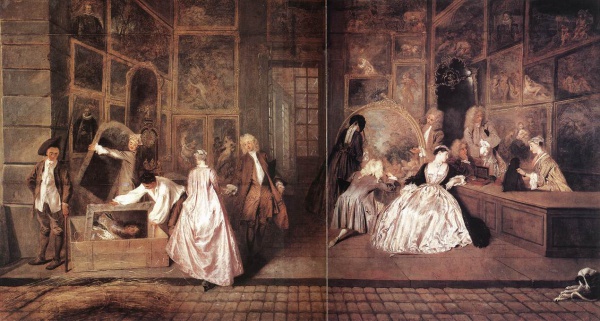Facts About L'Enseigne de Gersaint
"L'Enseigne de Gersaint" is a breathtaking oil painting by the French artist Jean-Antoine Watteau, found at Charlottenburg Palace in Berlin. Painted between 1720 and 1721, it stands out as one of Watteau's final masterpieces. Interestingly, this painting was originally created as a shop sign for Edme François Gersaint, an art dealer in Paris, showcasing more of Watteau's extraordinary talent than promoting the dealer himself.
The scene depicted in the painting is set in Gersaint's charming boutique on the Pont Notre-Dame in Paris, where he sold art and luxury goods to the aristocracy. The painting masterfully captures the lively interactions between customers and staff inside the shop. Over the years, the painting was modified, with additional sections added to transform its original arched shape into a rectangular form.
The various artworks within the scene critique high society and reflect the changing aristocratic culture during the reign of Philippe II, Duke of Orléans. The imagery hints at a shift from the old regime to a more liberal era, marked by the death of Louis XIV and the rise of Louis XV.
Though it was created as a shop sign, "L'Enseigne de Gersaint" spent just fifteen days at Gersaint's shop before being acquired by Claude Glucq. It later ended up with Watteau's patron, Jean de Jullienne. The painting eventually attracted the attention of Frederick the Great of Prussia, who acquired it in 1748. Since then, it has remained in Germany and is now part of the collection of the Stiftung Preußische Schlösser und Gärten Berlin-Brandenburg, proudly displayed at Charlottenburg Palace in Berlin.

 Belgium
Belgium